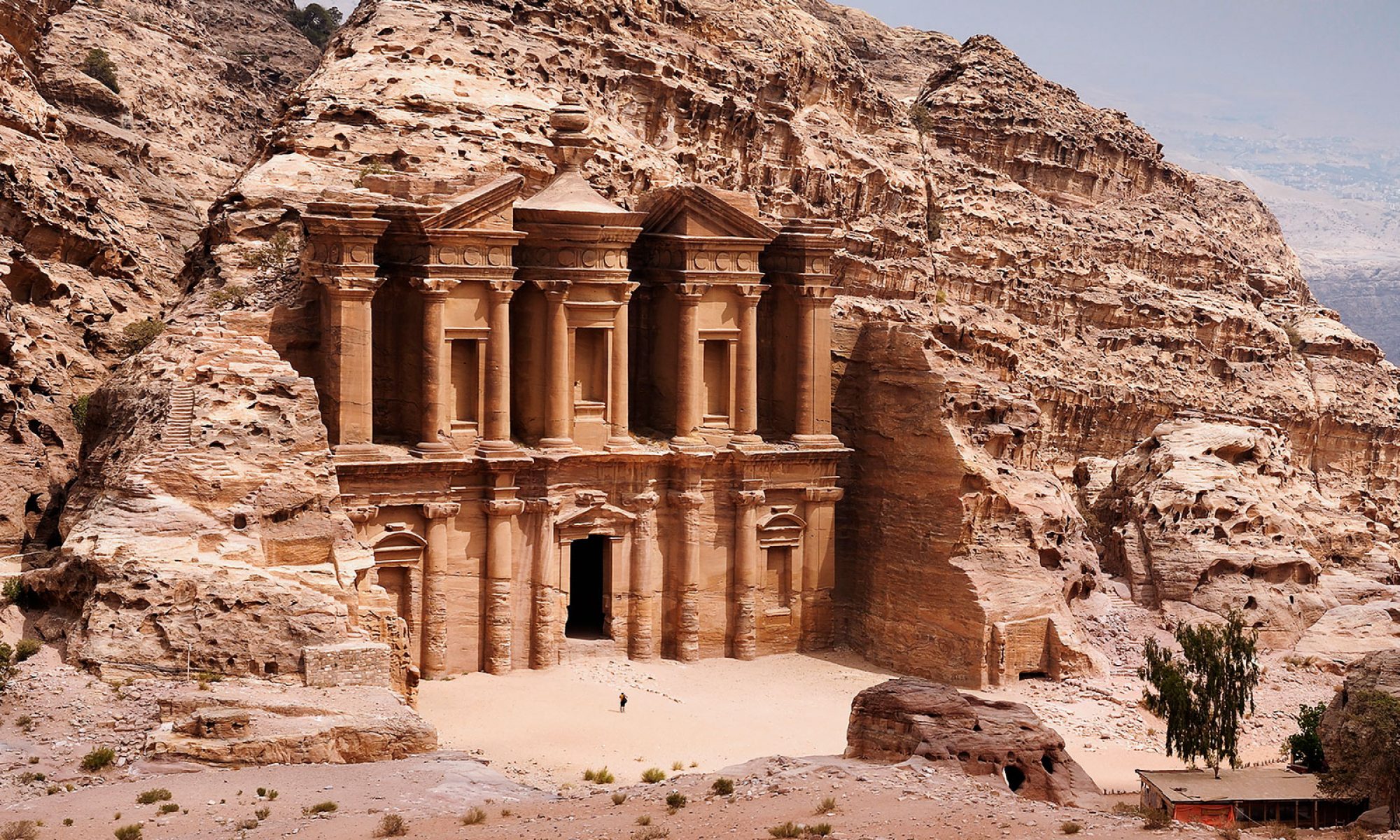This morning we went to a local village of the Tandroy people. They consult with a shaman to determine where to build their village and once decided the head of the clan builds his house, the largest in the village, on the northeast side. There is one door that he enters through and another on the opposite side of the house that everyone else, women, children, and guests enter through. The husband, wife and their small children live in the house. If there is a second wife she may live in the same house (especially if she is the first wife’s sister), in another house in the village, or in another village. Ernest told us about one very rich man who has 12 wives and their houses are set up like a clock with his house at the center. When the head of the clan dies the house does not get passed on to his family, instead it’s burned.
As the children grow they are moved to smaller houses in the vicity of his/her parents. Other houses on high stilts are used to store food and more ramshackle closed shed-like structures are used for cooking. We think about 50-75 people live in the clan. I looked into one of the houses and it consisted of a bed and a few items stored under the bed. None of the houses have windows.
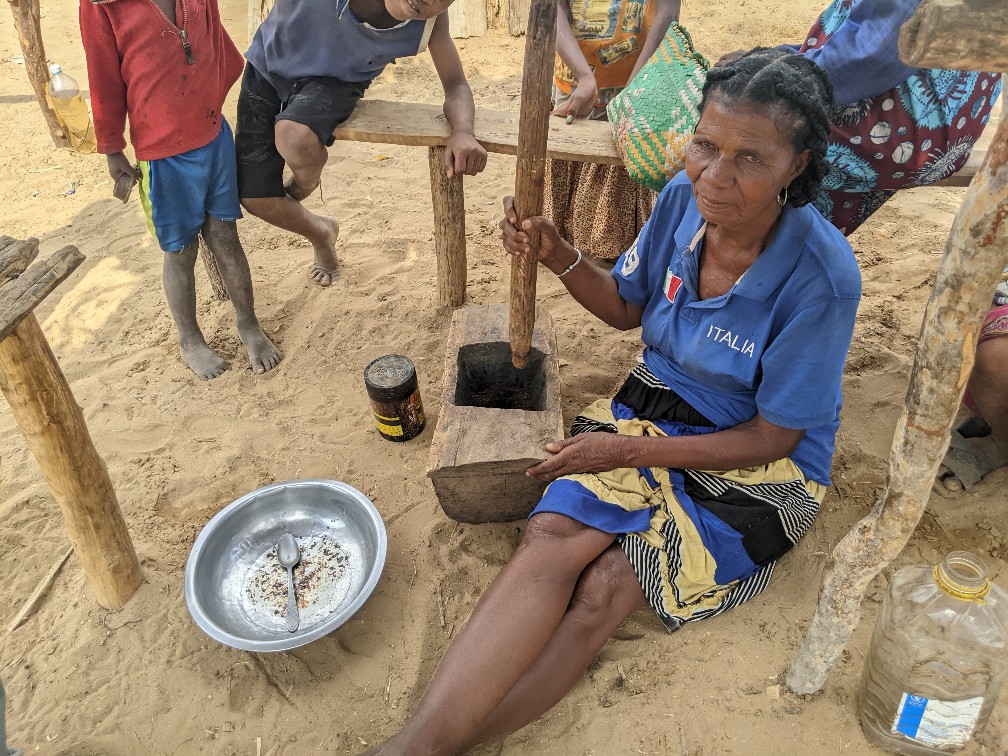
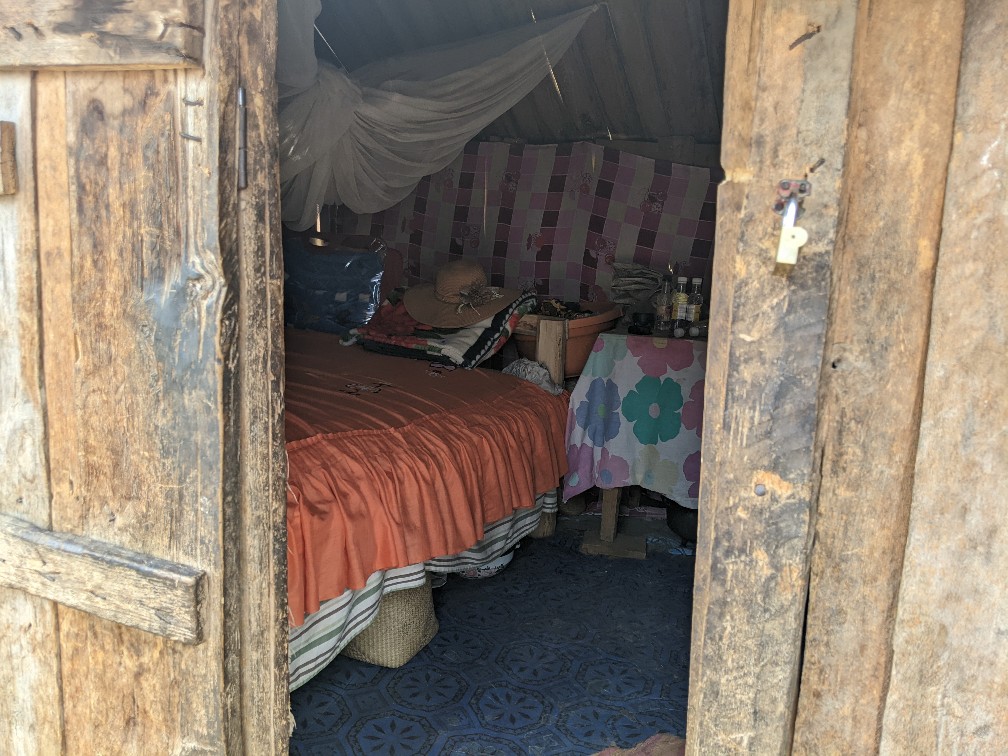
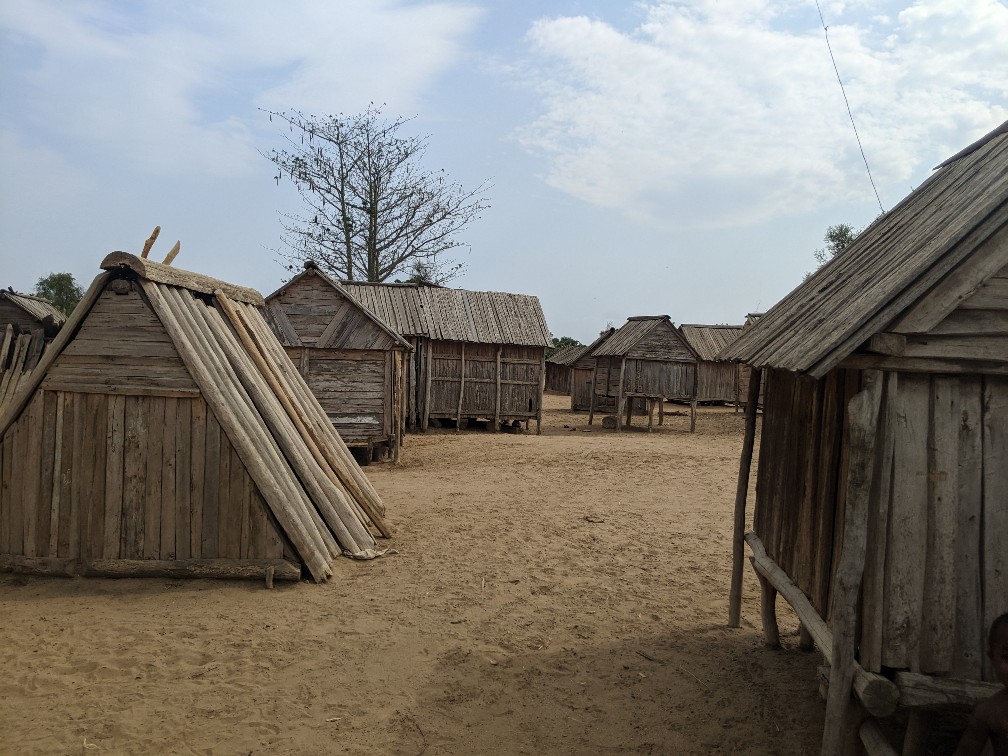
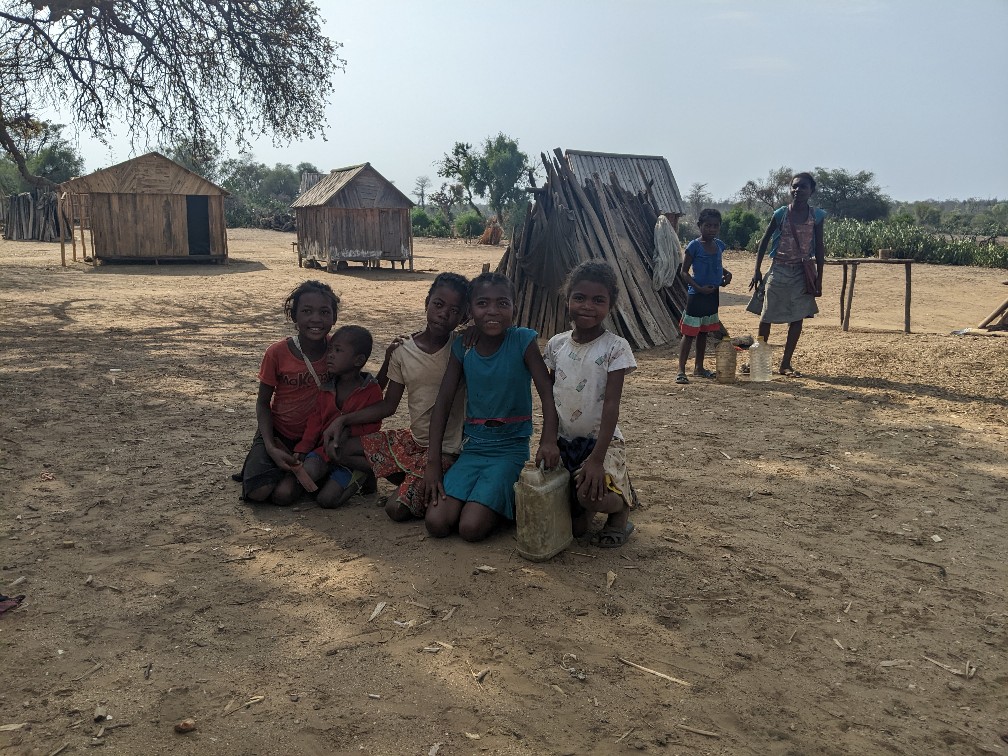
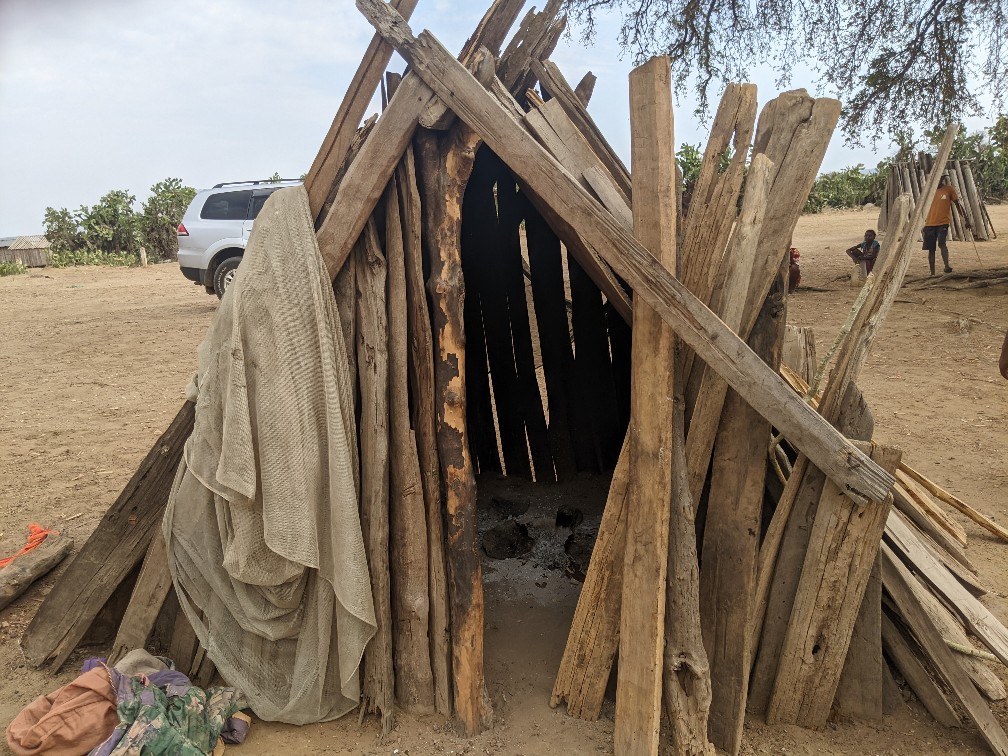
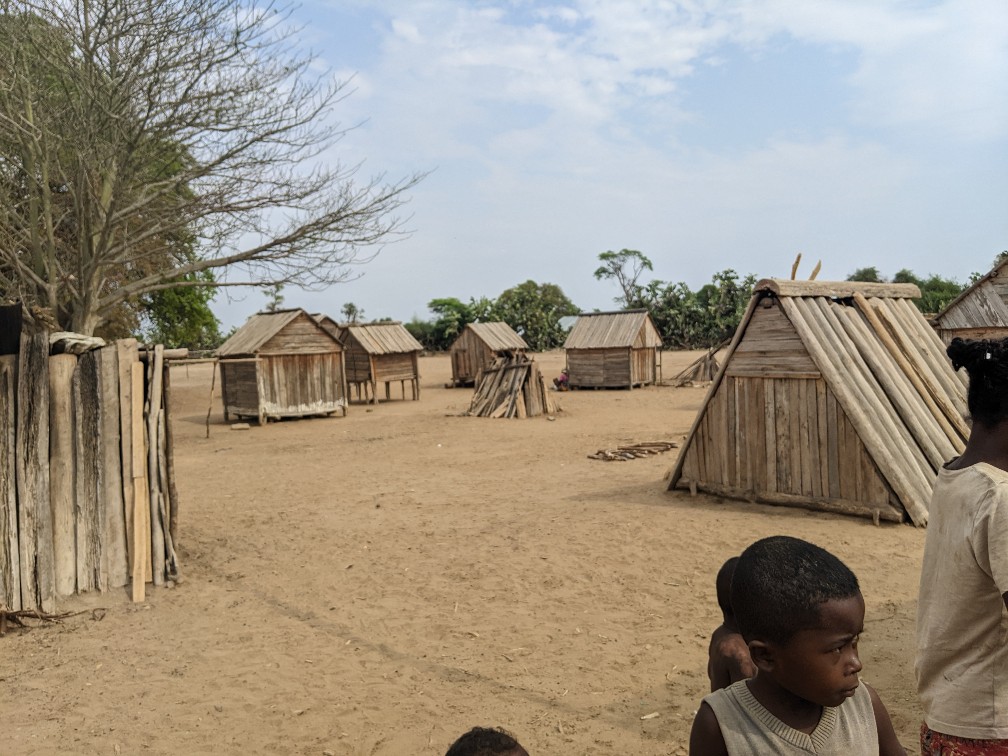
For the most part everyone looked pretty healthy, with the exception of one boy whose eye was swollen shut. They said he was going to get medicine in the market.
As we exited the car we were surrounded by kids, mostly girls who wanted us to take their picture. Then they wanted to see their picture. They tried to interact with us, asking us our names and our ages. We felt like the pied piper because where ever we went we had a trail of kids. Generally the kids looked happy but I don’t think I saw one child that didn’t have holes in his or her clothes. It is also very dry and dusty, so most of the kid’s clothes were fairly dirty. (That may be the result of water constraints.)
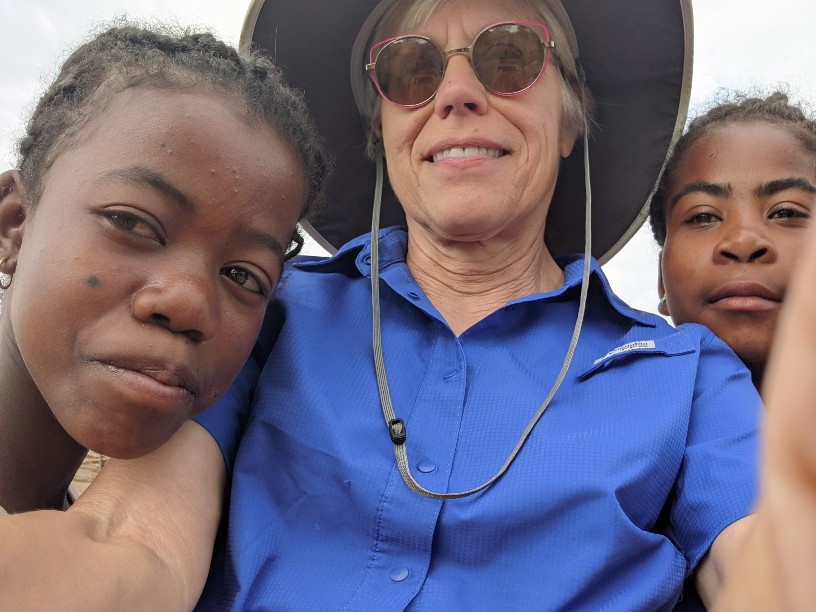
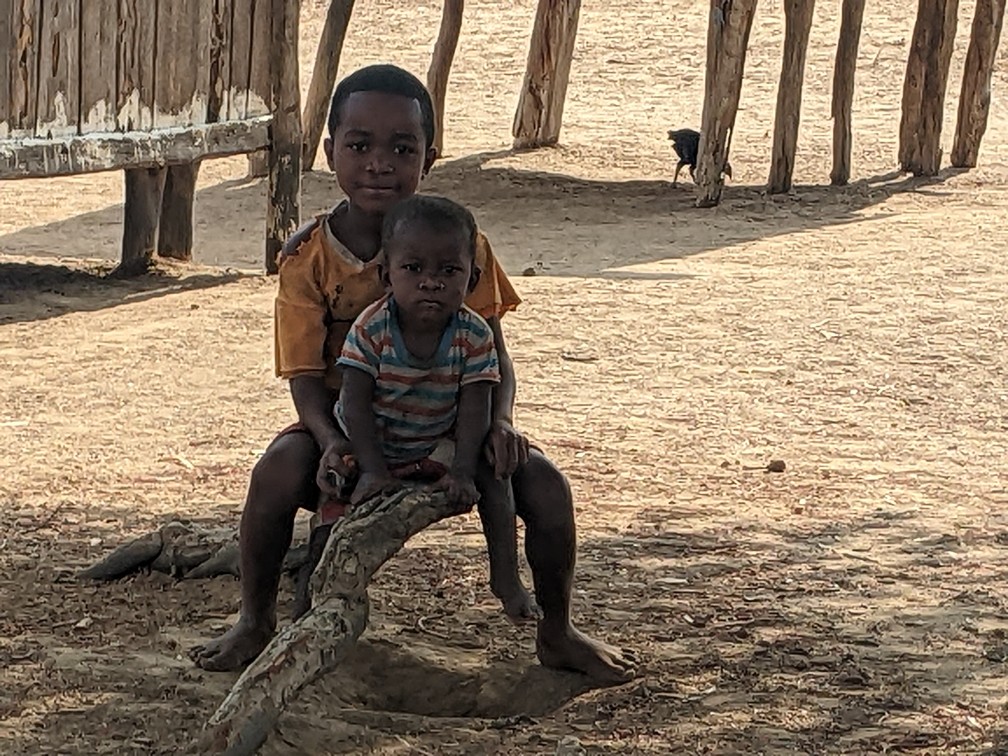
The village did not have electricity, although we saw a few small (12 inch sq.) solar panels. There’s no running water, nor are there bathroom facilities in the village. They just use the nearest river for water (often quite a distance away, deoendent upon time of year) and the edge of the village for other business. The government is trying to convince the villagers to manage the sanitation better, but tradition is strong and resistance is significant.
They had a little stall where they were selling coffee and cake to people walking along the road. A woman was grinding the coffee. Perhaps pulverizing is a better word than grinding as a stick and a partially hollowed out log were the tools of choice. Another woman who worked with an NGO that was teaching the village how to increase the yield of their crops was having a cup of coffee while we looked on.
We walked down the road to the school which consisted of three classrooms, built by Madagascar Classic, the tour company that owns our camp and organized the Madagascar portion of our trip. We went into one classroom that housed the first grade. There were about 60 kids in this small room. They had addition and subtraction problems written on the board. They counted for us in French and sang a song. Also on the school grounds was a covered shelter where the kids were getting lunch. The food was paid for by the World Heath Organization. As in many places, the school incentivizes parents to send their kids to school by giving the children food.
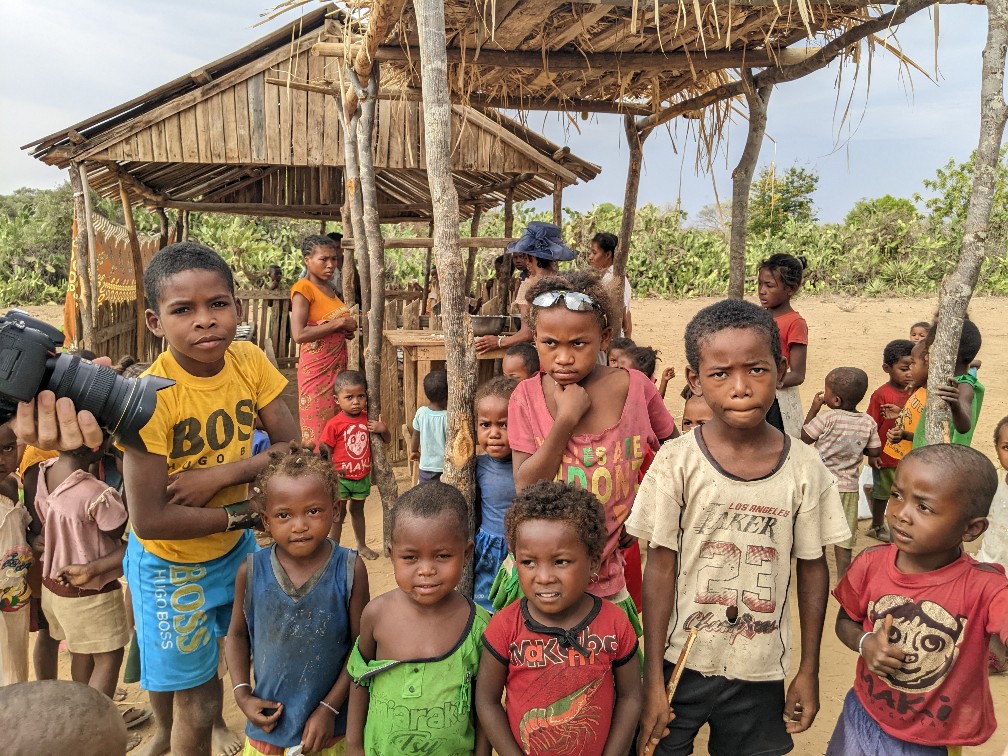
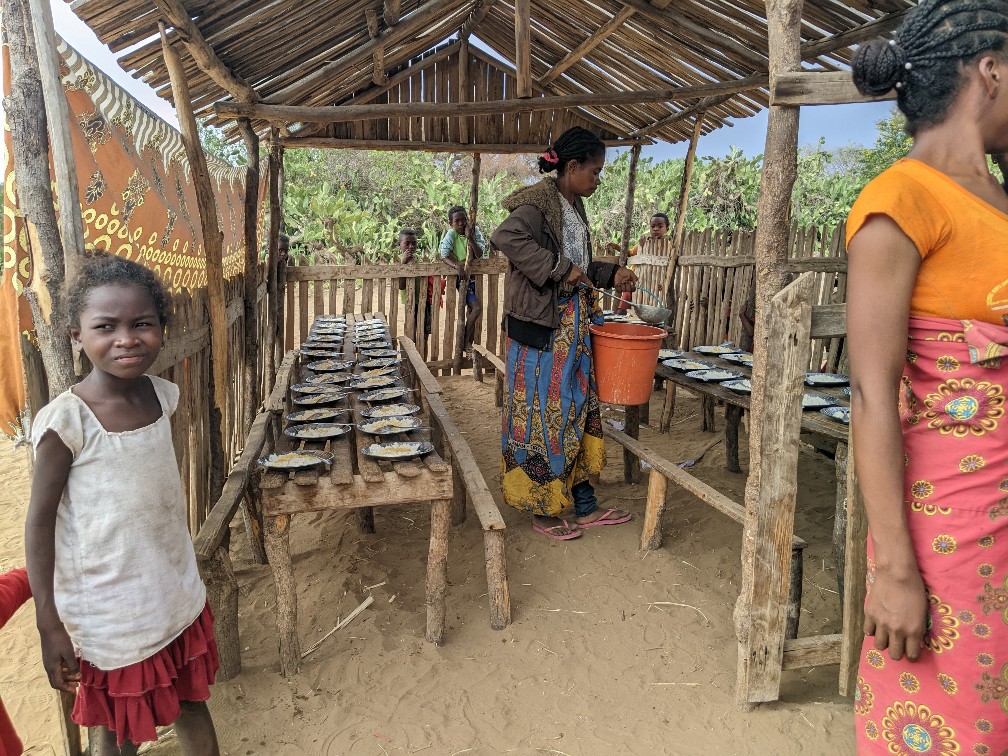
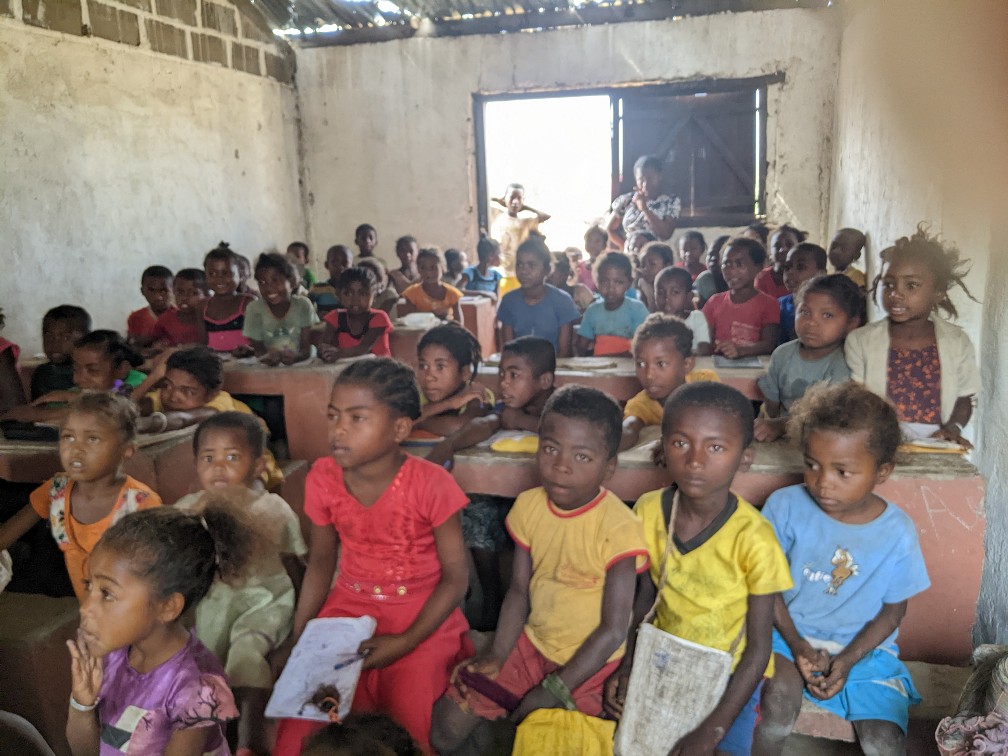
While we were at the school, our tracker had organized a visit to the local shaman. We entered a building that served as his “office” (it was not his home). As we entered he was speaking to the spirits. He showed us some of the tools he used to help people. We asked about shamanism versus the church. He does not go to church, but people who go to church still seek out his help. We asked to take his picture and he donned his shaman outfit for us to take these:
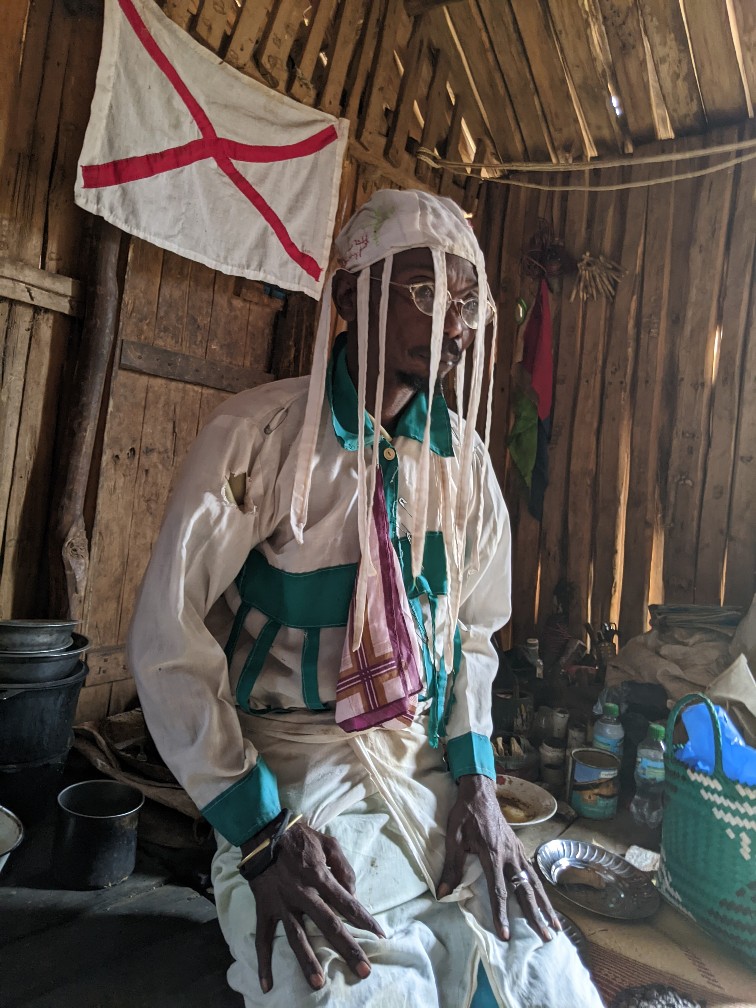
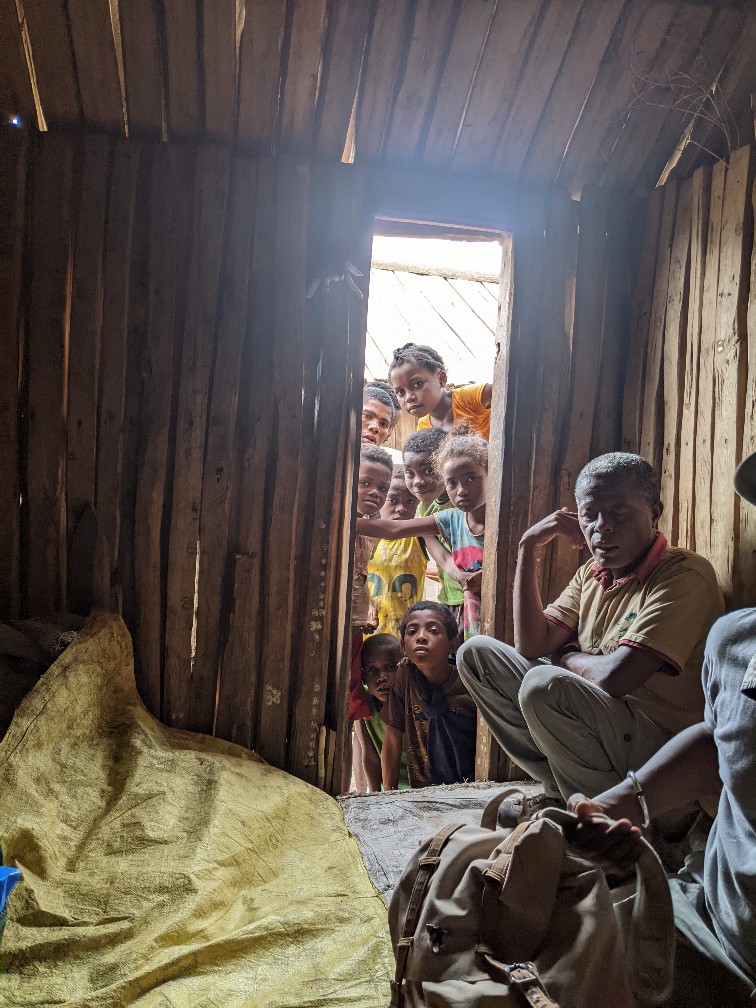
After visiting with the shaman we returned to camp. We typically don’t have activities in the middle of the day due to the heat, so we relaxed and wrote the blog in our tent. Ernest gave Rick a digital copy of a book called Lord and Lemurs which is about Madagascar so Rick spent the afternoon devouring that. As I mentioned our tent overlooks the river and we continuously hear the kids playing in it. It sounds like they’re having a great time.
We left the camp at 4:45 to go to another spiny forest. On the way we stopped at a baobab tree that had been carved out. The landowners dug a canal to channel the water in a large puddle at the base of the baobab. Then they transfer it into the baobab by hauling buckets up to the trap door in the trunk of the baobab. The water resides there until they need it. It does not hurt the baobab to be a water cistern and eventually the tree will heal itself and the cavity will be filled by the tree. Then the land owners will dig another cavity. We saw a number of trees with the trap door.
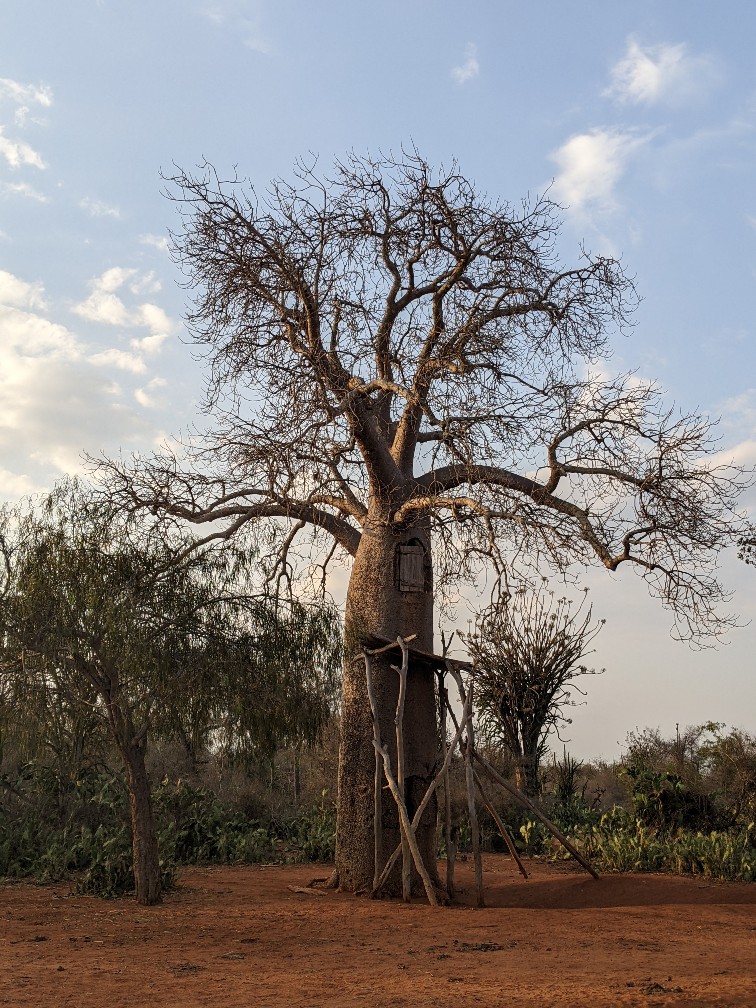
At this forest we saw a few ring-tailed lemurs and a lot of sifaka finding places high in the trees to spend the night. The sifaka were jumping from tree to tree and jumping or dancing along the ground.
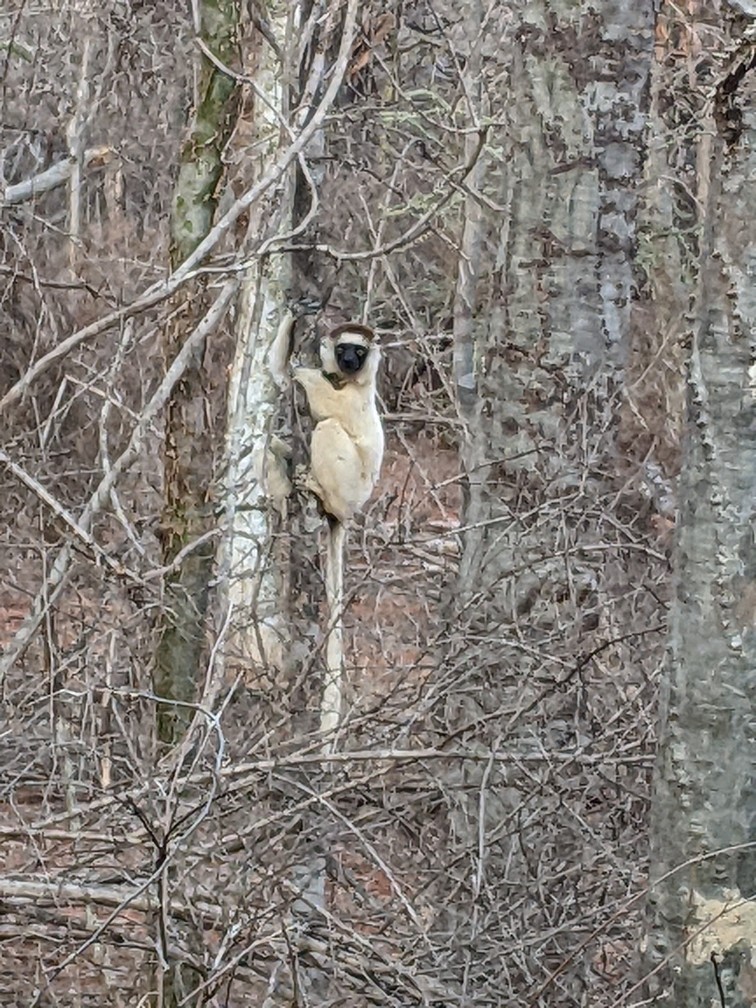
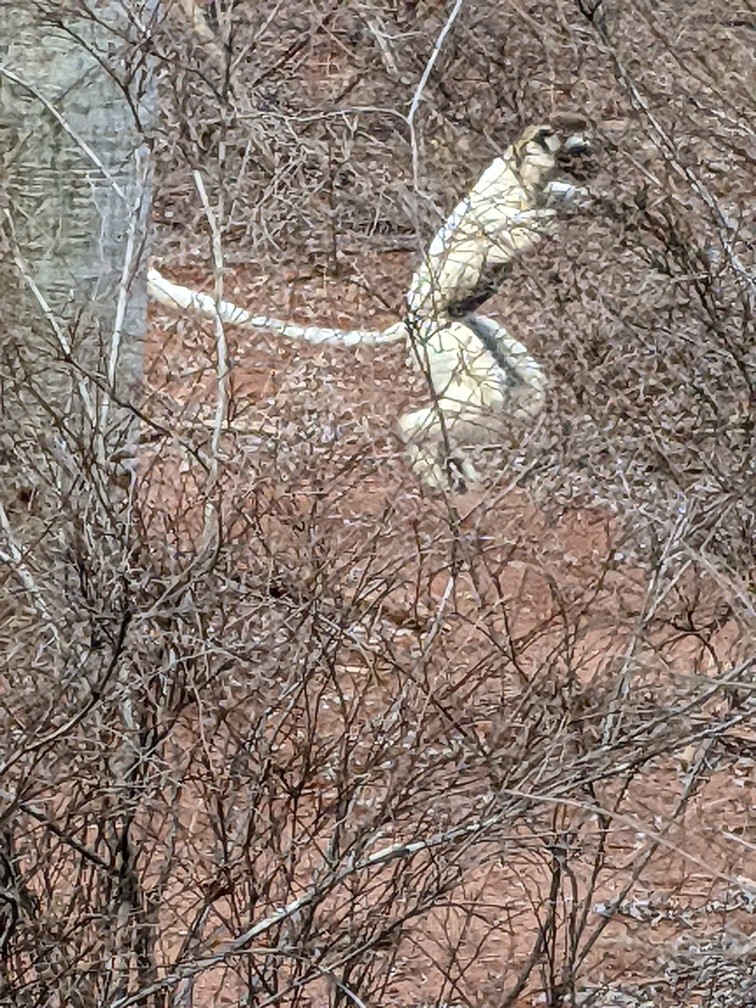
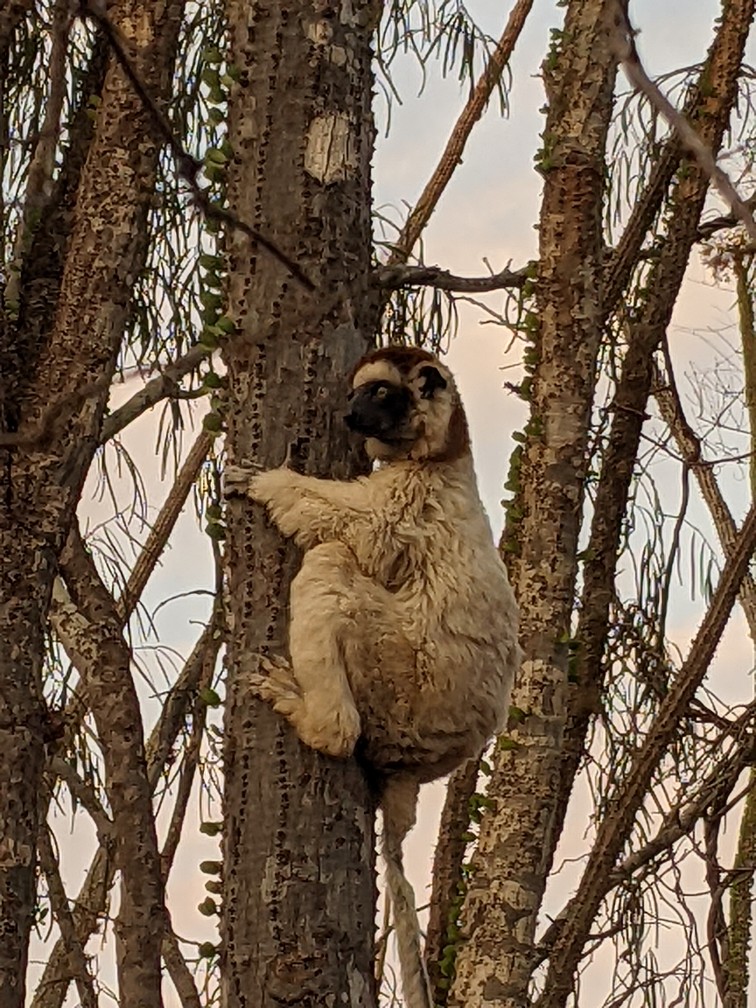

As the sun set we put on our head lamps and started looking for the nocturnal sportive and mouse lemurs. Ernest and our tracker waved their flashlight through the trees trying to find the reflection of their eyes. They found a number of sportive lemurs but the mouse lemur, which only weights about 70 grams, was elusive. Just as we were about to returne to the car Ernest found a mouse lemur. It was too dark to take a picture so you will have to trust us on this one.
We got back to the camp, had a predinner drink and then were whisked off to a private bush dinner. A table was set for two in an isolated outdoor area.
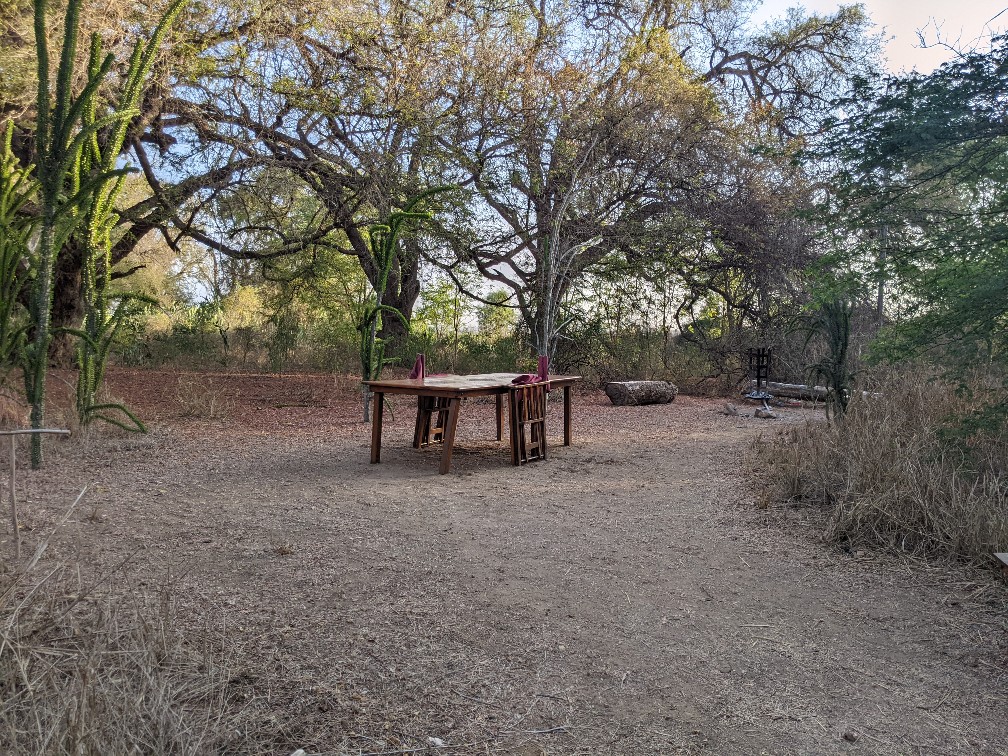
We had a waiter named Numa attending to us. His English is very good and he was telling us about himself over dinner. He is 31 years old, married, and has three sons, 12 years old, 6 years old, and 2 months old. His parents tried to arrange a marriage for him to his cousin but he said no. He met his current wife in the marketplace and told his parents he wanted to marry her. His parents then met with her parents and told them their son want to marry their daughter. Her parents told his parents to come back in a week during which time they discussed it with the girl. His parents came back and were told that yes, she wanted to marry him and they agreed on a bride price. A shaman was consulted to determine an auspicious day for the wedding and the rest is history. The camp must think very highly of him because he is being trained to be a guide. We really enjoyed talking to him.
Another early evening because we are leaving camp at 5am to see the lemurs waking up.
Some random things:
One of Madagascar’s big problems is population growth. The population is expected to double in the next 30 years. One of the blessings people say when people get married is may you have seven sons and seven daughters (seven is a lucky number). Ernest, our guide, is one of six kids, but his father is one of thirteen. Child mortality is down, which is good, but it’s further driving the population explosion. If this trend continues it will further exascerbate the impact on resources that are already strained — water, food, materials. The government is trying to convince people to use birth control with limited success. Another fatality in the struggle between tradition and facts.
The habitat for the lemurs and other indigenous animals is dwindling as more and more forested land is being lost to crops and building materials. 98% of lemurs are on the endangered species list. 30% of those are on the critically endangered list. A significant percentage of Madagascar’s revenue comes as a result of tourism. Not surprisingly, lemurs are a huge part of the draw. Tourism will suffer as the lemur population goes down.
The women of the village gather water, do the cooking and manage the gardening. If a man were to do any of these jobs, he would look weak and be ridiculed by his peers and the other villagers.
We often see women walking along the road carrying things on their head. They seem to be able to do this effortlessly.
Some women also use cosmetic face masks for a better complexion and protection from the sun.
